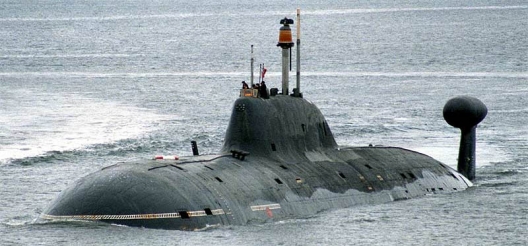 Russian attack submarines, the most in two decades, are prowling the coastlines of Scandinavia and Scotland, the Mediterranean Sea and the North Atlantic in what Western military officials say is a significantly increased presence aimed at contesting American and NATO undersea dominance.
Russian attack submarines, the most in two decades, are prowling the coastlines of Scandinavia and Scotland, the Mediterranean Sea and the North Atlantic in what Western military officials say is a significantly increased presence aimed at contesting American and NATO undersea dominance.
Adm. Mark Ferguson, the United States Navy’s top commander in Europe, said last fall that the intensity of Russian submarine patrols had risen by almost 50 percent over the past year, citing public remarks by the Russian Navy chief, Adm. Viktor Chirkov. Analysts say that tempo has not changed since then.
The patrols are the most visible sign of a renewed interest in submarine warfare by President Vladimir V. Putin, whose government has spent billions of dollars for new classes of diesel and nuclear-powered attack submarines that are quieter, better armed and operated by more proficient crews than in the past….
American naval officials say that in the short term, the growing number of Russian submarines, with their ability to shadow Western vessels and European coastlines, will require more ships, planes and subs to monitor them. In the long term, the Defense Department has proposed $8.1 billion over the next five years for “undersea capabilities,” including nine new Virginia-class attack submarines that can carry up to 40 Tomahawk cruise missiles, more than triple the capacity now.
“We’re back to the great powers competition,” Adm. John M. Richardson, the chief of naval operations, said in an interview.
Last week, unarmed Russian warplanes repeatedly buzzed a Navy destroyer in the Baltic Sea and at one point came within 30 feet of the warship, American officials said. Last year some of Russia’s new diesel submarines launched four cruise missiles at targets in Syria….
Moscow’s recently revised national security and maritime strategies emphasize the need for Russian maritime forces to project power and to have access to the broader Atlantic Ocean as well as the Arctic.
Russian submarines and spy ships now operate near the vital undersea cables that carry almost all global Internet communications, raising concerns among some American military and intelligence officials that the Russians could attack those lines in times of tension or conflict. Russia is also building an undersea unmanned drone capable of carrying a small, tactical nuclear weapon to use against harbors or coastal areas, American military and intelligence analysts said….
Analysts say that Moscow’s continued investment in attack submarines is in contrast to the quality of many of Russia’s land and air forces that frayed in the post-Cold War era.
“In the Russian naval structure, submarines are the crown jewels for naval combat power,” said Magnus Nordenman, director of the Atlantic Council’s trans-Atlantic security initiative in Washington. “The U.S. and NATO haven’t focused on anti-submarine operations lately, and they’ve let that skill deteriorate….”
Navy officials express concern that more Russian submarine patrols will push out beyond the Atlantic into the Mediterranean and the Black Sea. Russia has one Mediterranean port now, in Tartus, Syria, but Navy officials here say Moscow wants to establish others, perhaps in Cyprus, Egypt or even Libya.
Image: Akula class Russian submarine, June 3, 2008 (photo: Visergey)

